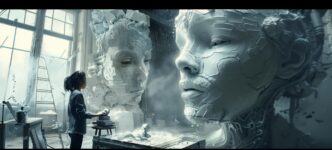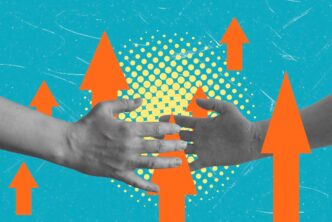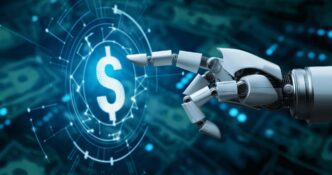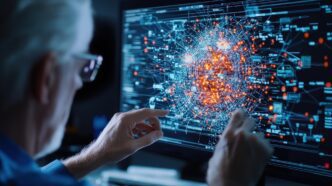Executive Summary
The Trajectory So Far
The Business Implication
Stakeholder Perspectives
AI is rapidly redefining the landscape of human creativity, offering unprecedented tools and capabilities that can amplify ideation, accelerate production, and unlock novel artistic expressions across virtually every industry. From marketing and design to music composition and scientific discovery, individuals and organizations are now leveraging artificial intelligence as a powerful co-creator and assistant, transforming abstract concepts into tangible realities with greater speed and innovative flair than ever before. This symbiotic relationship, where AI augments rather than replaces human ingenuity, is happening now, everywhere, fundamentally changing how we approach problem-solving and artistic endeavors to drive growth and competitive advantage.
Understanding AI as a Creative Partner
For centuries, creativity was considered an exclusively human domain, a unique blend of intuition, experience, and imagination. Artificial intelligence, however, has begun to challenge this notion, not by replacing human creativity, but by acting as an indispensable partner. AI tools can process vast amounts of data, recognize patterns, and generate novel combinations that would be impossible for a human mind to conceive alone.
Modern AI, particularly generative AI models, functions less like a rigid algorithm and more like an expansive knowledge base combined with a powerful idea generator. These systems can learn from existing creative works, understand stylistic nuances, and then produce entirely new content that adheres to specific parameters. This capability transforms the creative process from a solitary endeavor into a dynamic collaboration.
Practical Applications Across Industries
The ways in which AI can supercharge creativity are diverse and far-reaching, impacting virtually every sector that relies on innovation and original thought.
Ideation and Brainstorming
AI models excel at generating a multitude of ideas in a short span, overcoming creative blocks and expanding the scope of initial concepts. For marketers, AI can suggest campaign themes, taglines, and content angles based on target audience data and trending topics. Designers can use AI to explore countless variations of a logo, color palette, or architectural blueprint within minutes, accelerating the early stages of a project.
Writers can leverage AI to brainstorm plot points, character names, or article headlines, providing a fresh perspective when inspiration wanes. Even scientific researchers are using AI to generate hypotheses or identify novel molecular structures, pushing the boundaries of discovery. This rapid ideation allows human creators to focus on refining the most promising concepts rather than struggling to generate them.
Content Generation and Prototyping
Beyond ideation, AI can actively produce creative assets, from written content to visual art and music. Large Language Models (LLMs) can draft articles, marketing copy, social media posts, and even entire scripts, providing a solid foundation for human editors to refine. Image generation AI can create stunning visuals, illustrations, and photorealistic images from simple text prompts, revolutionizing graphic design and advertising.
Music composition AI can generate melodies, harmonies, and full orchestral arrangements in various styles, assisting composers and producers. This capability dramatically speeds up the prototyping phase, allowing creators to quickly visualize and test different iterations of their work. The time saved in content generation frees up human talent for higher-level strategic thinking and artistic direction.
Style Transfer and Exploration
AI can also analyze the stylistic elements of one piece of art or content and apply them to another, opening up new avenues for artistic expression. A photographer might use AI to apply the brushstroke style of a famous painter to their image, creating a unique hybrid. Architects can explore how different historical or futuristic design elements might integrate into modern structures.
This ability to seamlessly blend and transform styles allows creators to experiment with aesthetics in ways previously unimaginable. It fosters a deeper understanding of artistic components and enables the rapid exploration of diverse creative territories without extensive manual effort.
Optimization and Personalization
Creativity isn’t just about generating new ideas; it’s also about making those ideas resonate with an audience. AI can analyze audience data, predict preferences, and optimize creative outputs for maximum impact. For example, AI can A/B test different ad creatives or email subject lines at scale, identifying the most effective versions.
In entertainment, AI can help personalize content recommendations or even dynamically adjust narratives in interactive media based on user engagement. This data-driven approach ensures that creative efforts are not only innovative but also highly effective and tailored to individual tastes, enhancing the overall user experience.
Integrating AI into Your Creative Workflow
Making AI supercharge your creativity requires a deliberate and strategic approach, focusing on collaboration rather than full delegation.
Define Your Creative Goal
Before engaging AI, clearly articulate what you want to achieve. Is it brainstorming new product names, generating mood board images, drafting a blog post, or composing a background track? A clear objective will guide your choice of AI tool and the prompts you use.
Specificity in your goals and initial parameters will yield more relevant and useful AI-generated outputs. Think of AI as an incredibly powerful, yet literal, assistant that needs clear instructions.
Choose the Right AI Tools
The AI landscape is vast and rapidly evolving, with specialized tools for different creative tasks. For text generation, explore LLMs like OpenAI’s ChatGPT or Google’s Gemini. For images, consider Midjourney, DALL-E 3, or Stable Diffusion. Music creation might involve tools like Amper Music or AIVA.
Experiment with various platforms to find those that best suit your specific creative needs and workflow. Many platforms offer free tiers or trials, making exploration accessible.
Iterate and Refine
AI outputs are rarely perfect on the first try. Treat AI as a starting point, a co-conspirator in your creative process. Generate multiple versions, combine elements you like, and critically evaluate the results. Your human judgment, taste, and expertise are crucial in sifting through AI suggestions and refining them into a coherent and impactful final product.
The most effective use of AI involves a continuous loop of generation, evaluation, and refinement, with human input guiding each step. This iterative process allows for continuous improvement and the unique imprinting of your personal creative voice.
Maintain Human Oversight
The “supercharge” aspect of AI creativity lies in its ability to augment human capabilities, not replace them. Always maintain human oversight and critical judgment. Review AI-generated content for accuracy, originality, bias, and adherence to your brand voice or artistic vision.
Your role as the human creator is to provide the strategic direction, ethical framework, and emotional intelligence that AI currently lacks. This partnership ensures that the final creative output is both innovative and authentically human.
Navigating the New Creative Frontier
While the benefits are clear, integrating AI into creativity also brings important considerations.
Addressing Concerns: Originality and Ethics
Questions about originality, copyright, and ethical sourcing of training data are paramount. Creators must be mindful of the provenance of AI-generated content and ensure it aligns with legal and ethical standards. The responsibility for the final creative output, including its originality and potential biases, ultimately rests with the human creator.
Transparency about AI’s role in the creative process is becoming increasingly important, especially in commercial applications. Establishing clear guidelines for AI usage within creative teams can mitigate many of these concerns.
The Future is Collaborative
The most profound impact of AI on creativity will not be machines creating independently, but rather a new era of augmented creativity. Humans will leverage AI tools to push boundaries, explore new dimensions of expression, and solve complex creative challenges with unprecedented efficiency. This collaboration will democratize access to sophisticated creative tools, empowering a wider range of individuals to bring their visions to life.
Embracing AI as a creative partner means evolving our understanding of what it means to be creative in the digital age. It’s about harnessing powerful technology to amplify human imagination, leading to richer, more diverse, and more impactful creative outcomes.
The Augmented Creator
Artificial intelligence is not merely a tool for automation; it is a catalyst for creative revolution, offering unparalleled opportunities to enhance human imagination and productivity. By understanding its capabilities and integrating it thoughtfully into workflows, individuals and businesses can unlock new levels of innovation, overcome creative barriers, and produce groundbreaking work across all domains. The future of creativity is not human versus machine, but rather human with machine, forging a powerful synergy that promises to reshape our world with unprecedented ingenuity and artistry.








